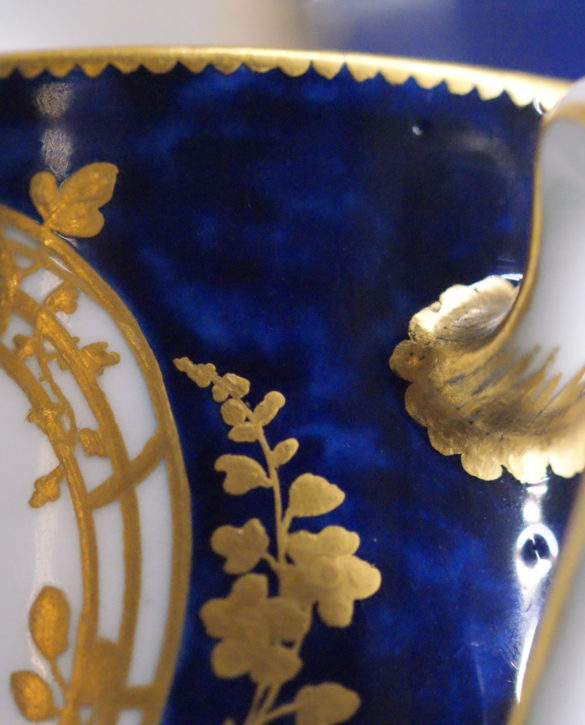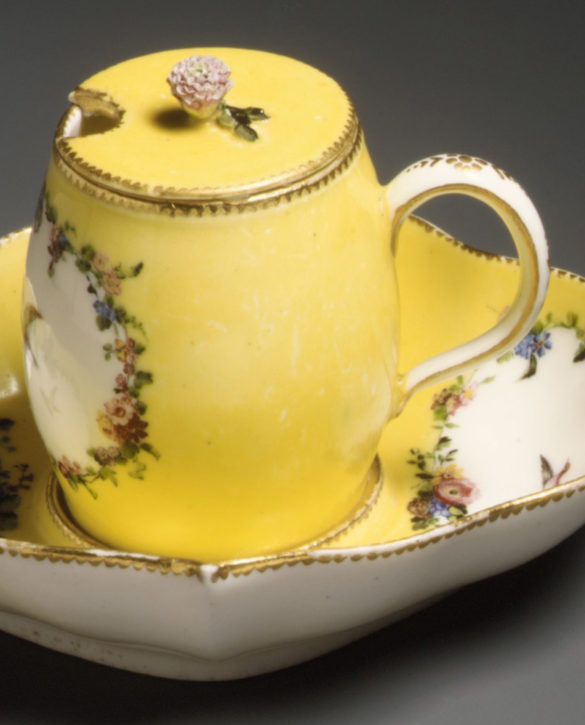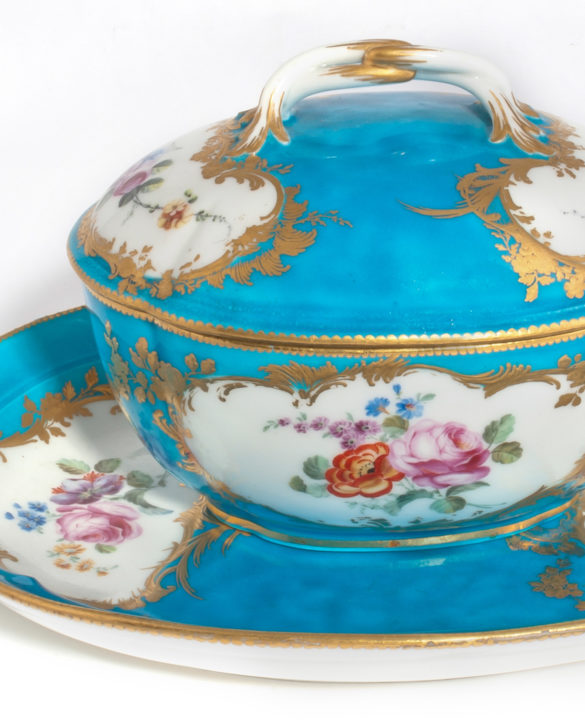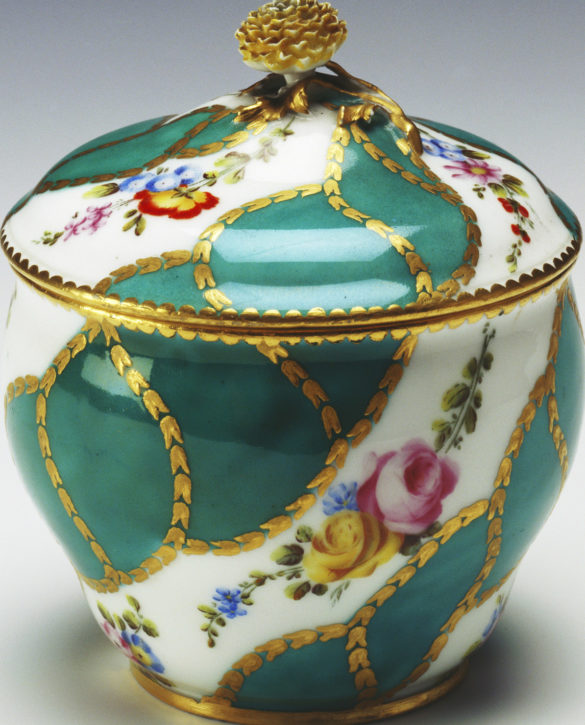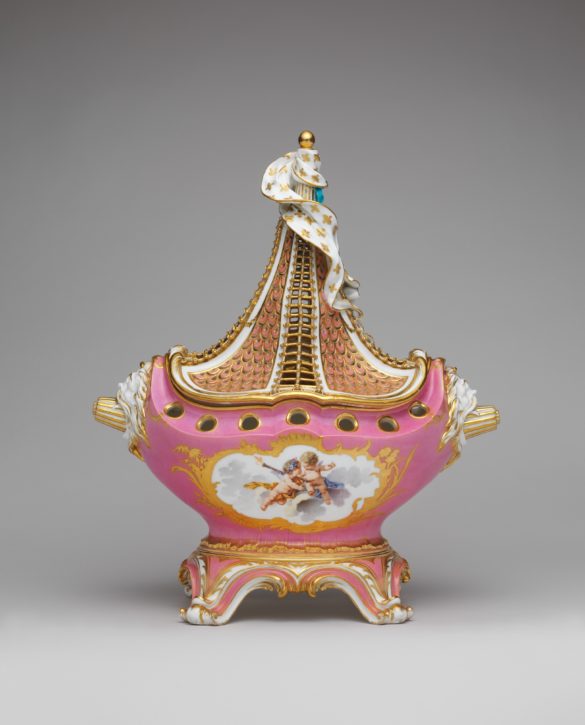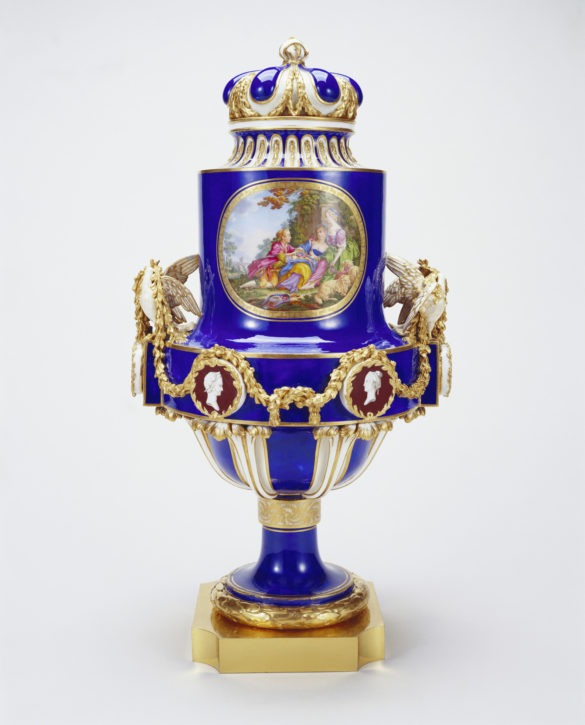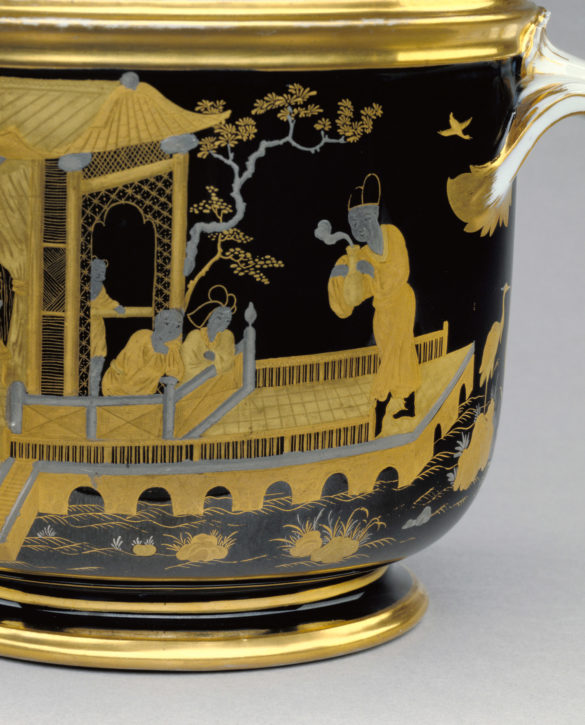BLEU LAPIS
The earliest ground colour used at Vincennes was blue, known as bleu lapis, a reference to the stone, lapis lazuli. It was introduced in 1751, probably to imitate Chinese powdered blue grounds. It is uneven and mottled as it was applied directly onto the unglazed body, with powdered cobalt added as a colourant, before glazing and firing. In the 1770s, it was known as ‘gros bleu’ (dark blue).
Detail from a Vincennes cup (Gobelet litron), 1754.
(Private Collection. Member’s photograph)

